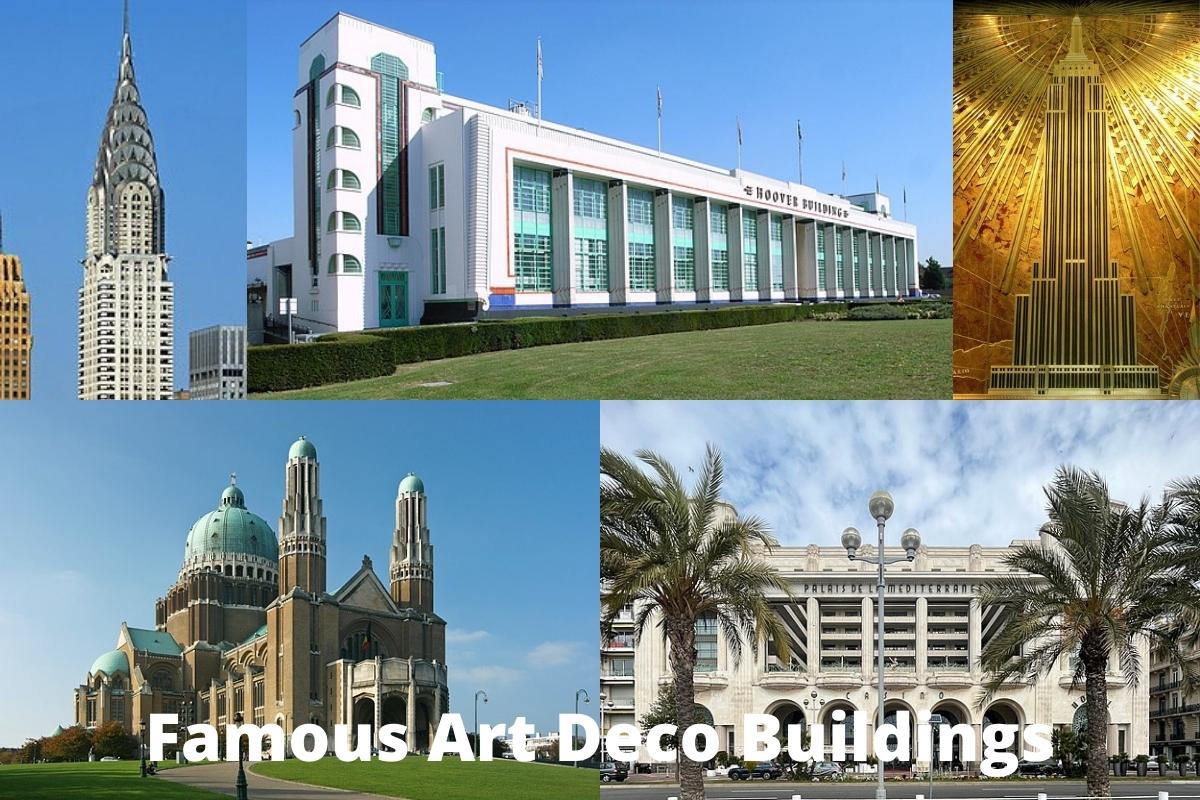Art deco is a popular architectural style that emerged in France after World War I, around the 1920s. Despite its early origin, this type of architecture continues to be popular all over the world.
This form of architecture represents a sleek style that exudes luxury through the use of intricate craftsmanship and rich materials.
Below, we discuss famous art deco buildings that you have probably seen in movies, social media, and magazines. We will also cover some history and the smart brains behind these buildings. Let’s dive in.
Famous Art Deco Buildings
1. Chrysler Building
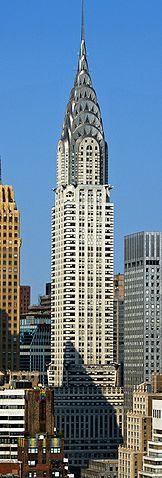
This iconic Manhattan building is a work of beauty. It was designed by architect William van Alen and completed in the 1930s.
At that time, it was the tallest building in the world, but that title lasted 11 months. Still, it is currently the tallest brick building worldwide, standing at 1,046 ft.
It is believed that contractors would erect four stories every week during construction, allowing the building to be completed in record time.
This landmark New York skyscraper has 77 floors and features stunning steel eagle heads, seven terraced arches, a crescent-shaped spire, triangular windows, and a steel sunburst crown.
The steel spire, which is one of the distinctive features of this building, is embellished with eagle gargoyles and a sunburst motif.
The interior is just as eye-catching with a few innovative elements. For instance, the partitions between offices are divided into interchangeable sections. That means the layout can quickly be changed to accommodate certain needs.
2. Empire State Building
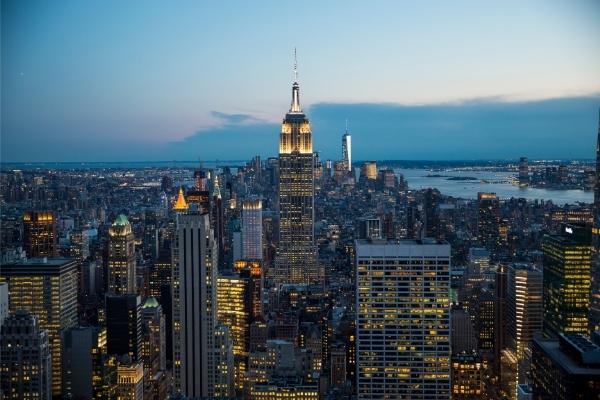
This 102-storied building remains one of the best examples of art deco architecture since its completion in 1931.
It was designed by the architecture firm, Shreve, Lamb & Harmon and remained the tallest building for 40 years until the construction of the World Trade Center.
The name of the building was derived from one of New York’s City nicknames, ‘Empire State,’ as that is where the building is located, specifically Manhattan.
Some of the attractive features of the Empire State Building include the building’s height, architecture, and observation decks. Every year, more than four million people visit the observatory decks located on the 80th, 86th, and 102nd floors.
This structure is not just a functional building for offices. It is also a cultural symbol, featured in multiple TV shows, and has been named among the seven wonders of the modern world.
From the steel frame covered in limestone and granites, to the streamlined façade, the setback shape, recessed windows, and the crowning spire, the Empire State building is among the most photographed structures worldwide.
3. Eastern Columbia Building
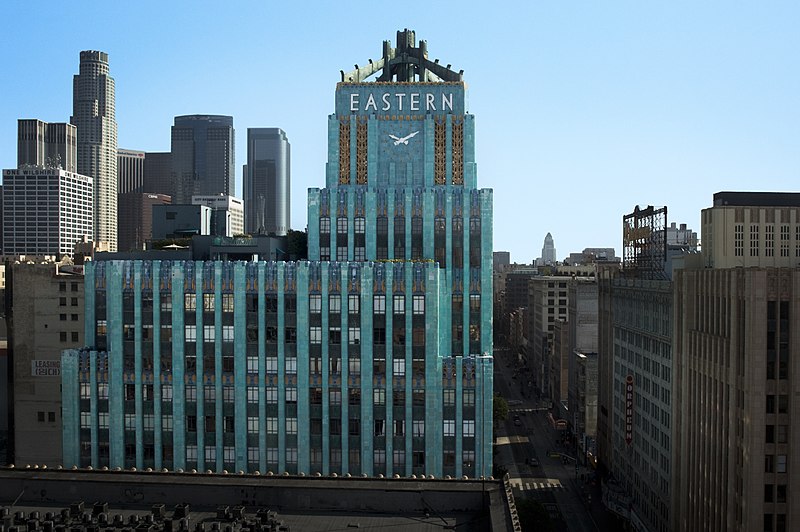
This glamorous building is popularly known as the ‘Jewel of Downtown.’ It was designed in 1930 by Claud Beelman and became the benchmark for art deco buildings in Los Angeles.
Standing at 264 ft, the building was constructed at a time when LA had a height limit of 150 ft. However, the city council made an exception for the striking clock tower that stands on top of the building.
This steel-reinforced concrete building is truly a sight to behold. It is clad in glossy terra cotta tiles, recessed paired windows, bronze spandrels, fluted piers, and a setback shape, all components of art deco architecture.
The Eastern Columbia building is considered a Historic Cultural Monument in LA. It meets that criteria by virtue of reflecting the broad economic, social, and cultural history of the community, state, and nation. It is a visual landmark, Representing LA’s vitality.
4. Hoover Building
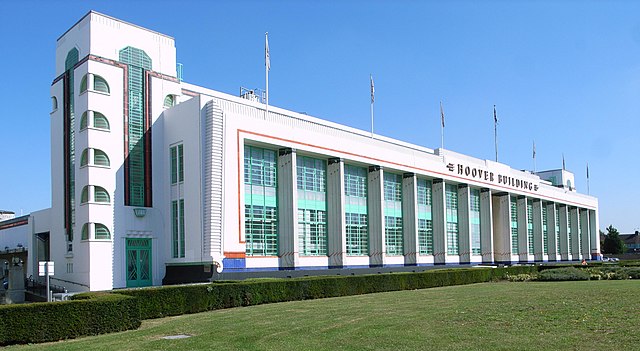
While art deco architecture continued being popular in the US around the 1920s and 30s, it was also taking hold in London. The Hoover Building was designed by the UK architecture firm, Wallis, Gilbert and Partners, in 1933.
But while the building is not a skyscraper, it has an ambitious design with a palatial façade, recessed glass windows, huge columns, and the most notable feature, the grand entrance.
Although it started as a factory, the Hoover Building is now a supermarket, specifically Tesco.
5. Griffith Observatory
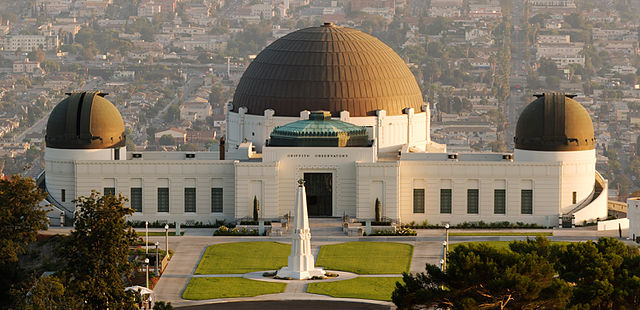
At the heart of Los Angeles stand the Griffith observatory. It was named after Griffith J. Griffith, who donated the land where the building sits. In his will, he donated funds to build the observatory, and we have him to thank for this art deco building.
Construction started in 1933, and by 1935, the observatory was opened to the public. Even though the main architects were John C. Austin and Frederick Ashley, the building has undergone expansion and renovation over the years but still retains the art deco style.
Since its grand opening, the Griffith Observatory remains the most-visited observatory worldwide. One of the highlights of this building is the telescopes that allow anyone to observe the skies. From the Samuel Oschin Planetarium to Griffith Park and the exhibitions, there is so much to explore in this building.
You can also enjoy the beautiful view of the Pacific Ocean, Hollywood, and Downtown Los Angeles from this observatory.
6. Basilica of the Sacred Heart, Brussels
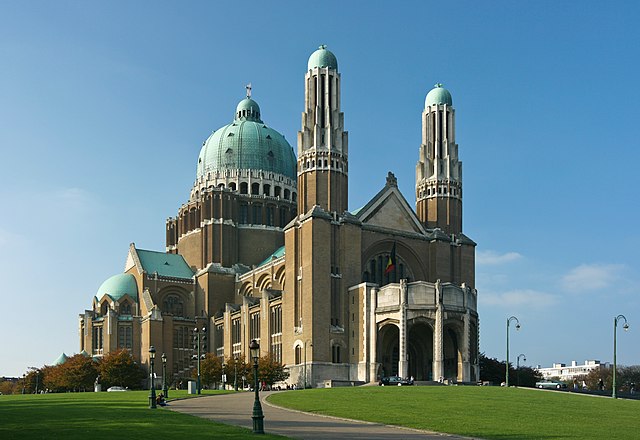
We cannot talk about famous art deco buildings without mentioning the Basilica of the Sacred Heart in Brussels, Belgium. This Parish measures 540 ft long, 350 ft wide, and 292 ft in height, with a capacity of 3500, making it among the largest churches by area in the world.
In 1905, King Leopold II laid the first stone of this basilica, but the church was completed in the 1970s because of interference from the World Wars.
The first thing you will notice about this building is the gigantic green copper dome, reaching a height of 292 ft, and the two towers.
Combine that with the red terracotta bricks, a pediment, arches, and modern glass-stained windows, and you have an art deco building. The interior also takes the same architectural style with geometric motifs and plenty of marble.
The basilica has an observation deck, which will give you amazing views of Brussel. Plus, if you climb the dome, you can access the museum and other parts of the church.
7. Hyatt Regency Nice Palais de la Méditerranée
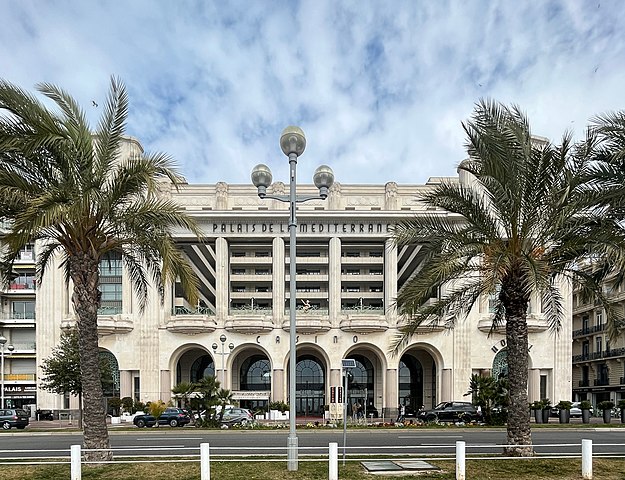
French architects Charles Dalmas and Marcel Dalmas constructed this building in 1929 for millionaire Frank Jay Gould.
At that time, it embodied 1930s charm with a theatre, cocktail bar, restaurant, and casino. It was also a major center for arts, where international and national art exhibitions were held.
In 1978, the original hotel was closed, and the building was later demolished in 1990.
The art deco façade was still maintained during the reconstruction, and everything inside now has a modern-art décor hybrid style. This fully modern hotel comes with lavish hotel rooms, a casino, and apartments.
8. Palacio de Bellas Artes
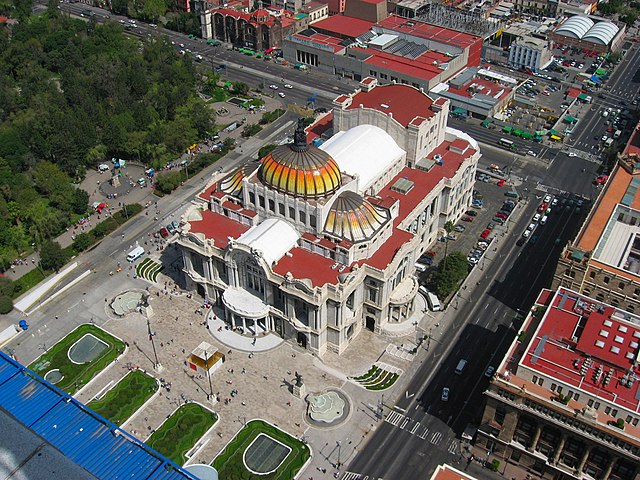
The Palacio de Bellas Artes, also referred to as the Palace of Fine Arts, is located in Mexico City. This prominent cultural center has hosted important events in theater, dance, opera, music, and literature, as well as notable exhibitions of photography, sculpture, and paintings.
Even though the initial building was built around the 19th century, it was soon demolished in favor of a better and more opulent structure.
The initial architect was Adamo Boarim, but due to political instability and soil issues, construction was halted in 1913. In 1932, construction resumed under architect Federico Mariscal, and the building was completed in 1934.
The exterior of the building is mostly neoclassical and art nouveau, while the interior is mainly art deco. Outside you will find statues of Pegasus, which were designed by Agustí Querol Subirats, a Spanish artist.
This whole structure is a work of art, representing what the building is used for. You will find murals all over from famous Mexican Artists like Rufino Tamayo and Diego Rivera, depicting societal and technological themes.
The Palacio de Bellas Artes has a unique stage curtain made of over 2 million cm stained glass crystals and weighs more than 24 tons.
9. Chicago Board of Trade Building
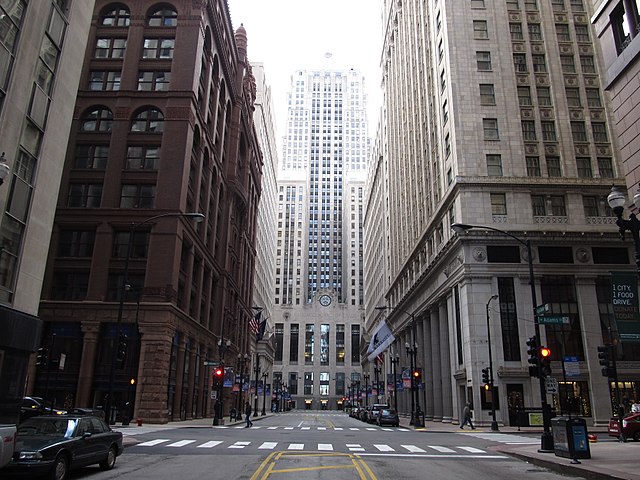
Constructed in 1930, the Chicago Board of Trade Building is now a National Historic Landmark. The architect behind it is William W. Boyington, and the structure stands at 604 feet.
This building is popular not only for its art deco architecture style but also for its enormous trading floors, large-scale stone carving, and sculptures. At the top stands an aluminum statue of Ceres, the goddess of grain.
Over the last couple of years, the building has attracted visitors from different places. It is also a great location for movie shoots, and the management team and owners have received awards for preserving this landmark.
From the dark windows, limestone piers, and streamlined geometric shape, this building has undergone renovation over the years but still maintains its striking appearance.
10. Teatro Eden
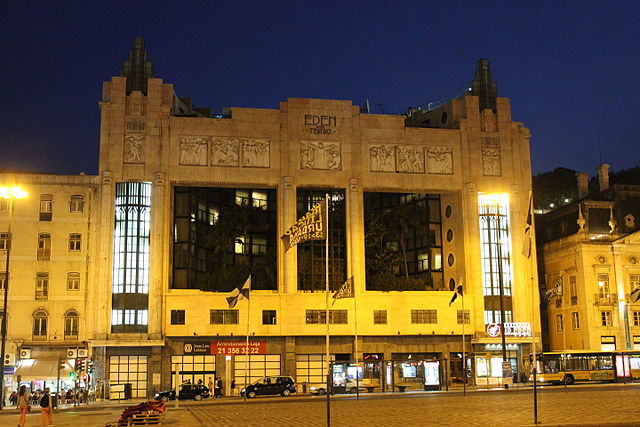
When art décor architecture was becoming popular, so was cinema. This explains how the Teatro Eden building started as a Cinema. It was designed by architects Carlo Florencio Dias and Cassiano Branco in 1931.
During that interwar period, it was a source of entertainment in Lisbon. Across the top is a stone frieze portraying actors before cameras and a film crew.
In 1989, the cinema was closed and remained unused for many years. This was until 2001 when it was renovated into a hotel with 134 rooms. But while the structure was slightly modified, it still retains the original art deco style.

